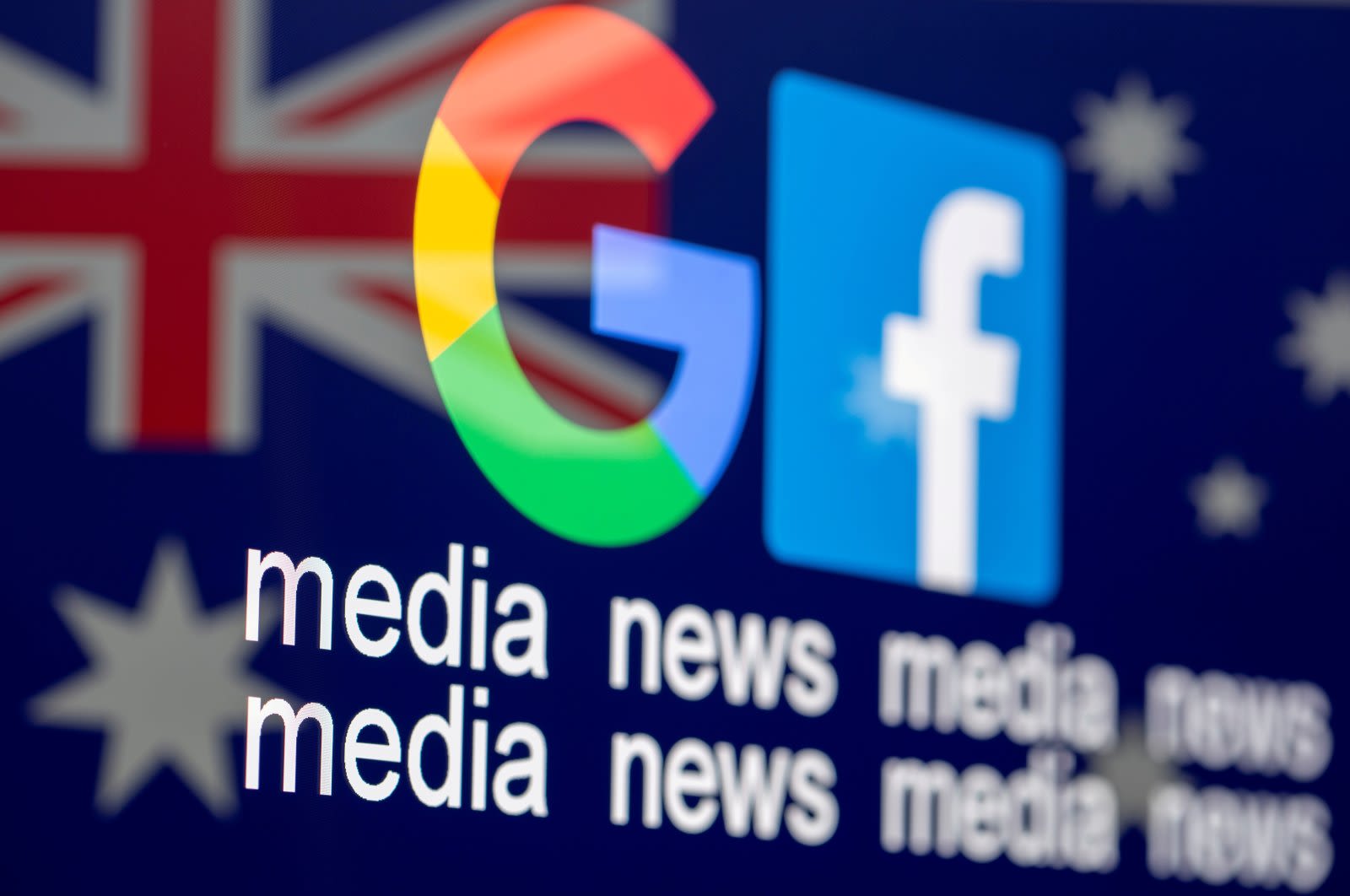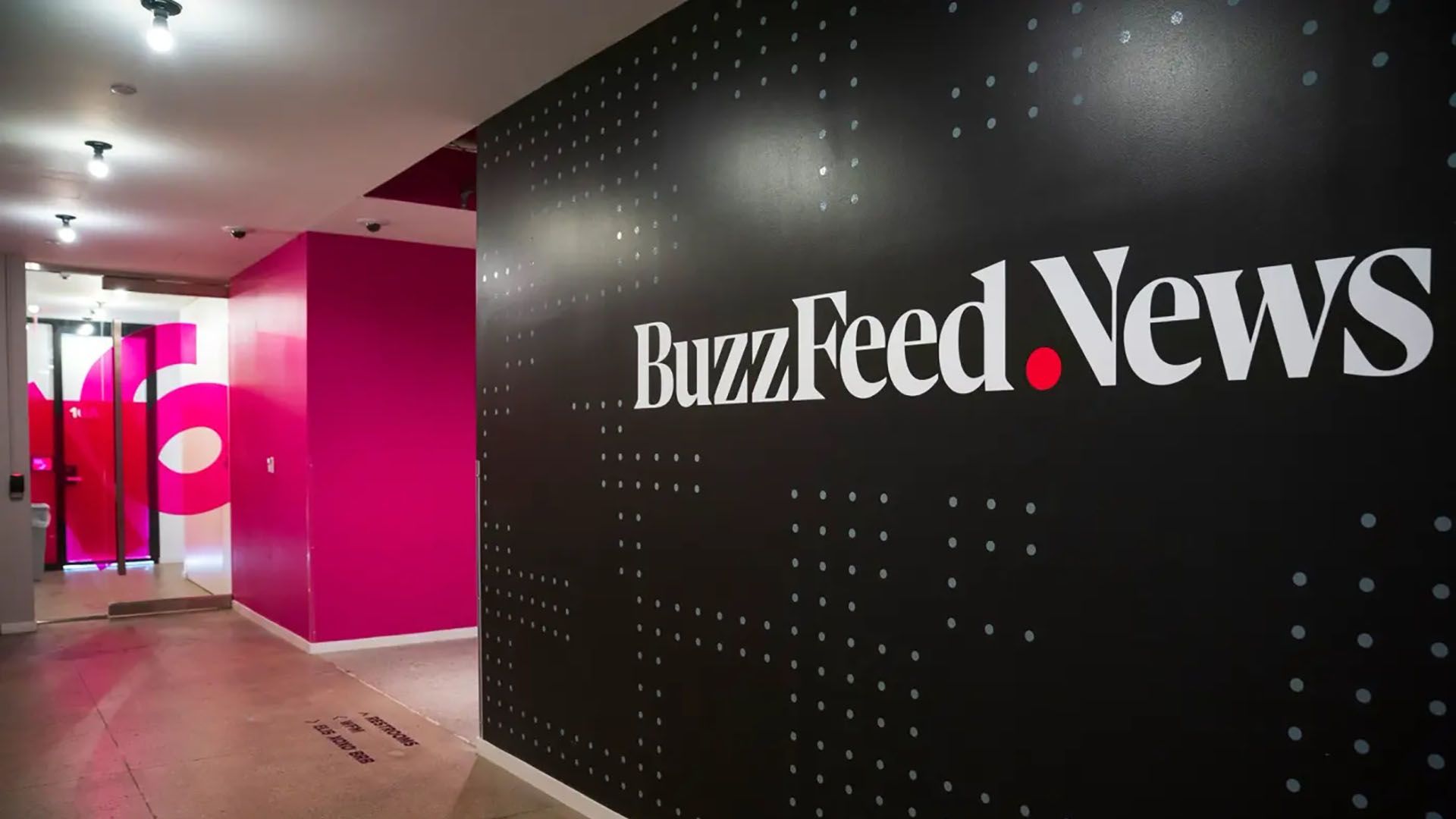Heavy consequences of reliance on advertising and social networks

The main business model that helps newspapers survive and thrive has long been advertising. In the context that print newspapers have been facing increasing difficulties and challenges, television and radio have also passed their glory days, especially in the past 10 years, as communication technology has become more and more modern with cheaper costs. Most online newspapers also aim to earn advertising revenue in the hope that the “chicken” will “lay golden eggs”. As social media develops rapidly along with the concept of “distributed content”, news agencies have realised that social media can play an important role in spreading information, bringing huge traffic. And, of course, the hope is that there will be an incremental source of advertising revenue – first display advertising, then automated advertising and other forms of sponsored content.
Press agencies race to have high traffic volume, especially access from outside sources depending on the algorithms of search engines and social networks, causing the quality of journalism to be reduced. Placing too many ad placements on the page and in articles also results in a bad experience for the readers. Asking a question to some leaders of press agencies, they just clicked their tongue: “There is no other way because there must be a source of income”.
However, at present, it has become apparent that an online newspaper relying on advertising and social networks will not be able to develop sustainably, and may even suffer heavy consequences, potentially leading to bankruptcy.
Friend or enemy?

About more than 10 years ago, there was a debate at many press conferences and workshops as well as at newsrooms around the world, whether to consider social media as friend or foe. Calling “enemy” because social media at that time “robbed” a lot of readers and revenue from news agencies, calling “friend” because it was also thanks to social media that news websites attracted significant traffic.
Of course, one would expect that the more traffic is, the more advertising revenue increases, helping offset the decline in print advertising and distribution revenue.
After all, leaders of the press agencies closed the view that social media are both friend and enemy, the English term is called “frenemy”. Social media - then mainly Facebook and Twitter - posed many threats to news agencies, but also brought many benefits, so a strategy to capitalise on social media is an integral part in newsroom activities.
There has even been a concept of “social journalism” - that is, press agencies use social media in all stages of the content production process, from gathering information, verifying information, and supplementing information to the release of information.
Many newsrooms were so innovative that when there was breaking news, they posted it on their Facebook fan page or Twitter account first and then make the news on their own website.

On February 25, 2021, the Australian Parliament passed the Treasury Laws Amendment (News Media and Digital Platforms Mandatory Bargaining Code) Bill 2021, which requires global technology companies to pay fees for the use of news content from Australian media. Illustrative. Photo: Reuters
On February 25, 2021, the Australian Parliament passed the Treasury Laws Amendment (News Media and Digital Platforms Mandatory Bargaining Code) Bill 2021, which requires global technology companies to pay fees for the use of news content from Australian media. Illustrative. Photo: Reuters
Over time, the relationship between the press and social media as well as search engines like Google has become less smooth.
Fears mixed with excitement have now given way to constant collisions and collaborative projects between technology platforms, and the press have now given way to harsh statements and threats from both sides.
However, the disadvantage seems to be on the side of the press agencies. The money is not very significant, not even seen, while the traffic has dropped dramatically.
Over time, the relationship between the press and social media as well as search engines like Google has not been smooth. Fears mixed with excitement have now given way to constant collisions, collaborative projects between technology platforms and the press have now given way to harsh statements and threats from both sides. However, the disadvantage seems to be on the side of the press agencies.
According to the latest surveys, the traffic from Facebook to news sites of the press agency has plummeted, and Meta - the parent company of this social network - continues its policy of staying away from the press. Data from reputable analytics firms Chartbeat and Similarweb in May confirmed the increasingly clear downtrend.
Of the 1,350 global news outlets included in Chartbeat’s data, 27% of traffic from external sources, search engines, and social media in January 2018 came from Facebook, equivalent to 2 billion pages. In April 2023, this rate dropped to 11% (equivalent to 1.5 billion).
Although all press agencies were affected, the worst are the small-scale newspapers. Surveying 486 small press agencies (with an average traffic of less than 10,000 pages per day), the traffic from Facebook in April accounted for only 2%.
For large press agencies (with an average of over 100,000 pages/day) the reduction was 24%, while for medium-sized newspapers (from 10,000 to 100,000 pages/day), the reduction was as much as 46%.
Previously, the UK’s biggest local and national news publisher Reach warned about digital ad revenue in the first four months of 2023. With digital revenue down 14.5% year-on-year in the first four months of 2023, Reach blamed a page-view slowdown on “recent changes to the way Facebook presents news content”.
Data from publisher analytics firm Chartbeat shows that Twitter referral traffic, 1.9% of all traffic in April 2018 to 1,350 publisher sites included in the analysis, had fallen to 1.2% five years later in April this year.
The data shows that small publishers in particular now barely get any referral traffic from Twitter. There were just 186,930 page view referrals this April to 486 small publishers (those with less than 10,000 daily page views) in the Chartbeat sample, down 98% from 10.1 million page views in April 2018.
The outbreak of the Covid-19 pandemic has "ruined" the traffic to small-scale news agencies. Even the well-known press agencies are not immune to decline.
Across the 25 English-language publishers we looked at, the average two-year decline between April 2021 and April 2023 was 30%.
Facebook and the collapse of Buzzfeed News

The shutdown of Buzzfeed News last April shows how risky it is if news agencies focus too much on the strategy of attracting traffic from social media platforms.
Although Similarweb's social media traffic only counts views on computers and accounts for a small percentage of the overall traffic of a website, the downward trend is clear.
In just two years, the number of visits to Buzzfeed News from Facebook has decreased from 261,669 in April 2021 to 124,825 in March this year, a decrease of 110%.
Similarly, Buzzfeed.com also suffered a 70% drop over the same period. It should be noted that traffic from other social networks also fell, but the decrease from Facebook was the largest. In April 2020, traffic from Facebook on computers accounted for 76% of traffic from Buzzfeed's social networks. The figure plunged to 34% in March 2023.
Facebook's declining role also affects the total readership of news organisations that depend on social networks.
According to Similarweb, there were 152.6 million visits to Buzzfeed.com two years ago, compared with less than 100 million in recent months. The news agency said the reduction in the time users spent on their content was also due to Facebook's changes.
In recent time, news agencies have been severely impacted by Facebook’s algorithm changes and the fact that the platform no longer prioritises news.
An algorithm change in 2014 to reduce clickbait content severely affected the news sites that focus on viral content like Upworthy and Buzzfeed, and more changes in 2018 to prioritise content from family and friends in the news feed was the next big blow to news agencies.
In 2022, Facebook announced that it would abandon Instant Articles, which has made access to news faster, with a friendly format right in Facebook's mobile application.
Facebook's declining role has also affected the total number of readers for press agencies depending on social networks. Changes to the algorithm of Facebook, as well as the fact that this platform no longer prioritises news, have hit news outlets hard.
In April 2023, Facebook's parent company, Meta, released a report affirming that news content plays a "small and diminishing role" on its platform.
The report, which was published shortly after the UK applied new legislation to force Meta and Google to pay publishers for the use of their news content, claimed that links to news stories account for less than 3% of what Facebook users around the world see in their feeds.
The report’s authors made a "rough estimate" that press agencies earn an average of 1% to 1.5% of their total revenue from referrals back to their websites, from content shared on Facebook.
Previously, at the end of 2022, Meta laid off a series of important employees related to the news sector, which showed that the technology group was ready to part ways with journalism.
Among the senior staff who were forced to leave included David Grant, who was in charge of the Meta Journalism Project, and Dorrine Mendoza, who was in charge of the local media outlets’ cooperation.
Among other press-related positions that have also been fired, were the head of news cooperation for Southeast Asia, a director of news programmes, two directors of news integration, and many others.
Similarweb data for 28 legacy and digital native sites shows that both types of publishers have seen traffic from Facebook fall sharply.
Vice-owned women's youth and lifestyle-focused publisher Refinery 29 saw the largest fall at 92% between April 2021 and March 2023. It was followed by Reach sites, such as express.co.uk and manchestereveningnews.co.uk at 87%.
In April 2020, 95% of referrals from social networks on Ladbible's desktop came from Facebook. This figure was 49% in March this year. The rate for sun.co.uk in the same period fell from 75% to 25%. For the Daily Mail, the drop was from 59% to 19% but they get more traffic from Twitter and YouTube.
The following are two stories about two famous newsrooms that once pioneered innovation in journalism but now have to close and declare bankruptcy. They are a bleak indicator of the future of digital journalism.
Buzzfeed News: A bright star forced to go out

Buzzfeed News, which was once a bright star of digital journalism, has announced the permanent shutdown of its Pulitzer Prize-winning news division and laid off about 60 reporters. This was a step that was described by Ben Smith, its founder and editor-in-chief, as “the end of the marriage between news and social media”.
Those who study modern journalism certainly know this famous name. Buzzfeed was once the "unrivalled champion" of viral news and a leader in the category of articles named “listicles”, which were once considered a new creation of journalism (such as “Five ways to help women stay fit over 40” or “Ten places to visit in summer”, etc.) and even violent, provocative and shocking content. However, they could not overcome financial difficulties.
Jonah Peretti, the founder of Buzzfeed, told employees: “I made the decision to overinvest in BuzzFeed News because I love their work and mission so much. This made me slow to accept that the big platforms wouldn’t provide the distribution or financial support required to support premium, free journalism purpose-built for social media”.
The drop in traffic to this page is attributed to a decline in traffic from important sources like Facebook, which is mainly caused by Facebook's move to encourage users to watch and share videos like TikTok.
Less traffic means less ad revenue. Less revenue led to the closure of Buzzfeed's news division and, as a result, many journalists lost their jobs.
I made the decision to overinvest in BuzzFeed News because I love their work and mission so much. This made me slow to accept that the big platforms wouldn’t provide the distribution or financial support required to support premium, free journalism purpose-built for social media.
This is bad news for everyone involved, and more broadly, for digital journalism. Buzzfeed News used to produce many excellent and in-depth stories and they created really impressive journalistic content, that even reputable long-time newspapers had respect for. They won many awards as well as the regard of colleagues and readers, but now they cannot exist.
Buzzfeed pioneered the use of viral content and helped legitimise it as a new form of journalism. The site’s early success, from its launch in 2012 to early 2019 when it started laying off staff, has inspired many other news agencies to create their viral content.
In early 2013, many newspapers were eager to learn part of Buzzfeed’s magic. Trinity Mirror suddenly tripled its traffic overnight, thanks to the launch of the UsVsTh3m and Ampp3d projects, which openly imitated Buzzfeed’s casual, even vulgar style.
The Sun’s editor-in-chief at the time, David Dinsmore, also called Buzzfeed ‘the greatest thing on the internet’ and the newspaper launched a similar product. Even in a report by former Sony CEO Howard Stringer, he also urged BBC employees to be different like Buzzfeed.
In the UK, The Independent’s Indy100 page, full of shocking news, eye-catching images and quizzes, is considered a version of Buzzfeed.
Buzzfeed originally became famous largely because its entertainment division used user-generated content, with ‘bullshit’ headlines like ‘10 cardboard boxes that look like David Cameron’ (this was deleted) or shocking quizzes, but do not forget that they also have a lot of impressive articles.
Their news division was truly professional, being named Website of the Year at the 2018 Society of Editors Press Awards and they even a Pulitzer Prize in 2021.
A study by Nanyang Technological University in Singapore found that the news influence of BuzzFeed News was as great as The New York Times, which was due to having a team of competent journalists who can produce high-quality press works.
Another study in 2018 by researchers at the University of Leeds confirmed, that Buzzfeed News reporters were also sharp and had all the qualities of traditional journalists, even though they were quite young and focused on issues of a group of readers between the ages of 18 and 30.
This study, published in Journalism Studies, showed that Buzzfeed News was not just a website with content to increase traffic, but a truly serious news agency with journalists who adhere to the highest professional standards.
The shutting down of Buzzfeed’s news division is a warning of the difficulties digital journalism is facing. After two decades, digital journalism is still struggling to find a sustainable business model. And in fact, no purely ‘new media’ newspaper can surpass traditional press agencies.
In the Press Gazette’s March 2023 ranking of the world’s top news websites, the only ‘new media’ newspaper that made the Top 25 was Buzzfeed News, and they came in at number 25.
The shutting down of Buzzfeed’s news division is a warning of the difficulties digital journalism is facing. After two decades, digital journalism is still struggling to find a sustainable business model. And in fact, there is no purely ‘new media’ newspaper that can surpass traditional press agencies.
Vice Media: Big investment but still going bankrupt

Vice Media Group once pledged 1 billion USD in annual revenue, attracting eight- to nine-digit investments from tycoons like Rupert Murdoch and Disney. Investors rated the company, founded in 1994 and originally a punk magazine in Montreal, to be valued at 5.7 billion USD in 2017.
But Vice declared bankruptcy in early May 2023. Less than a month earlier, they fired their entire global newsroom and shut down the international journalism brand Vice World News. They also discontinued their weekly TV show ‘Vice News Tonight’, which debuted in 2016 and had run more than 1,000 episodes as of March 2023.
Why did it end up like this? Joseph Teasdale, head of the technology division at Enders Analysis, pointed the problem to Vice’s failure to develop their business plans.
“Vice had a pitch – we know how to engage young people – but they never found a way to turn that pitch into a business,” Teasdale said. “They tried digital advertising, sponsored content, creative agency work, TV production, but continually missed revenue targets and never hit sustained profitability,” he added.
Despite some interesting and quite clever diversifications, the core business model is ad-driven, volume-driven, and ultimately dependent on the big tech platforms to deliver audiences that Vice will never own themselves – the reverse of what the smarter legacy media companies are doing.
Jim Bilton, managing director at Wessenden Marketing, drew attention to the role the tech platforms had in Vice’s financial downfall.
“Despite some interesting and quite clever diversifications, the core business model is ad-driven, volume-driven, and ultimately dependent on the big tech platforms to deliver audiences that Vice will never own themselves – the reverse of what the smarter legacy media companies are doing,” Bilton said. “The bottom line is that the better legacy media organisations are actually much more agile, smarter, and multi-dimensional than the ‘one trick pony’ Vice. Trusted brands, audience-appropriate content, quality independent journalism, tight management and common-sense should/must win in the long-term!”
Teasdale added that Vice, in common with Buzzfeed, had believed that their online content businesses would scale in a similar manner to the software and platform successes of the last decade.
“You invest up front, and if you grow users enough, your revenues will eventually vastly outstrip your costs. But journalism is a lot more of a widget business than people thought: if you want people to keep coming to your site, you need to keep making content, and so you need to keep spending money. A news business like Buzzfeed or Vice could never enjoy the kind of margins a platform business like Facebook can.”
Vice’s bankruptcy comes weeks after Buzzfeed, another giant of the 2010s digital media scene, shuttered its dedicated news brand Buzzfeed News. Insider, another digital-native outlet now owned by Axel Springer, announced last month it was laying off 10% of U.S. staff.
Teasdale said it was “hard to say exactly” why these rivals were all having trouble at the same time. “Finding investors willing to fund an ‘extend and pretend’ strategy is harder now: the capital markets have tightened with higher interest rates; and there’s a domino effect, where investors or potential acquirers see the failure of a peer and shut their wallets,” he said. “The most effective way these companies had of making money was pitching investors; that well has run dry.”
Ben Smith, former BuzzFeed News editor-in-chief and now Semafor editor-in-chief, stressed that the end of BuzzFeed News became inevitable, “when consumers found their Facebook feeds toxic, not delightful; when platforms decided news was poison; and when Facebook, Twitter, and the rest simply stopped distributing links to websites.”
Remember that social media and even search engines can bring certain traffic to news agencies but not readers. Without the loyalty of readers, news agencies will become precarious to algorithmic changes in social media and vulnerable to the declining trend of digital advertising. Perhaps now we can confirm the fact that to develop and make money, online newspapers cannot rely solely on advertising, and even less can depend on social networks.
Recent developments deliver a warning that the media should not put their fate in the hands of others.
Remember that social media and even search engines can bring certain traffic to news agencies but not readers. Without the loyalty of readers, news agencies will become precarious to algorithmic changes in social media and vulnerable to the declining trend of digital advertising.
Published: June 2023
Content: LE QUOC MINH
Translation: NDO
Design: BONG MAI, VU ANH TUAN
Photos: AdobeStock, www.ncsc.gov.uk, Getty Images, Reuters, The Wall Street Journal
